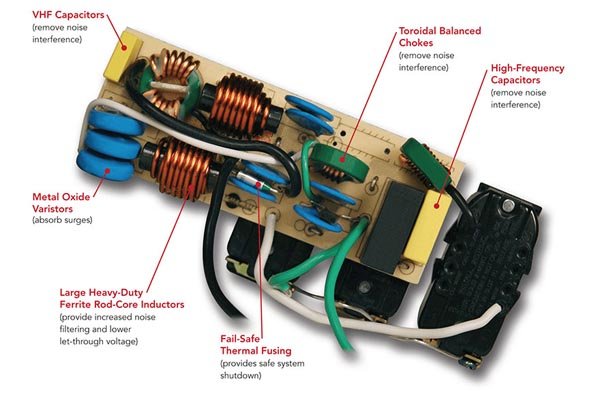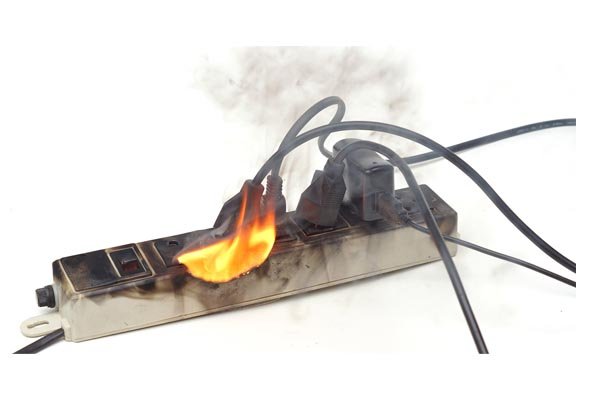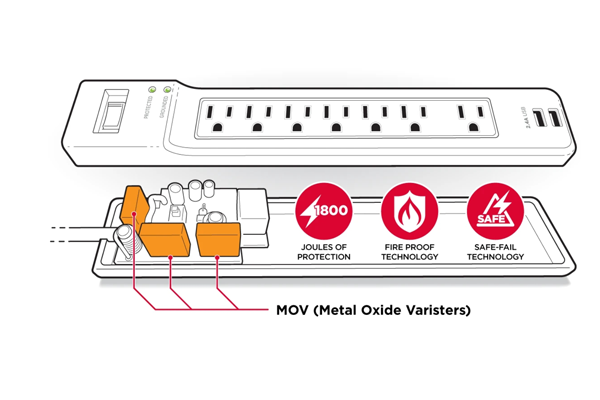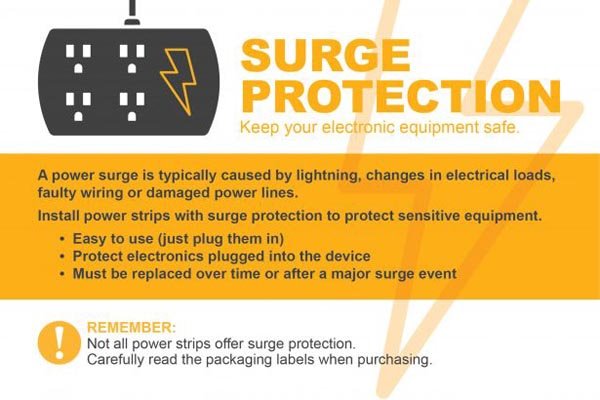
Ever wondered how to protect your valuable gadgets from unexpected power surges? Let’s explore what surge protectors are and why they’re essential for your home or office.
A surge protector safeguards your electronic devices from voltage spikes by diverting excess electricity away from your gadgets. This ensures that your valuable electronics remain safe and functional even during electrical disturbances. Understanding surge protectors can save you from costly damages and extend the life of your devices.
It’s crucial to know the difference between surge protectors and power strips.
What is the purpose of a surge protector?
Surge protectors are designed to shield your electronics from unexpected voltage spikes.
The main purpose of a surge protector is to absorb and dissipate excess electrical energy during power surges, preventing it from reaching and damaging your connected devices. This protection is vital for maintaining the longevity and performance of your electronics.

When I first started setting up my home office, I didn’t realize how important surge protectors were until a lightning storm knocked out my equipment. That experience taught me the value of investing in quality surge protection.
How Surge Protectors Work
Surge protectors typically use components like Metal Oxide Varistors (MOVs) to absorb excess voltage. When a surge occurs, these components redirect the extra electricity safely to the ground, ensuring your devices remain unaffected.
Benefits of Using Surge Protectors
- Protects Electronics: Shields against voltage spikes and surges.
- Prevents Data Loss: Keeps your data safe during electrical disturbances.
- Cost-Effective: Saves money by preventing expensive repairs or replacements.
- Enhances Safety: Reduces the risk of electrical fires caused by surges.
Choosing the Right Surge Protector
When selecting a surge protector, consider the following factors:
| Feature | Description |
|---|---|
| Joules Rating | Indicates the energy absorption capacity. |
| Number of Outlets | Determines how many devices you can protect. |
| Response Time | Faster response times offer better protection. |
| Clamping Voltage | Lower clamping voltage provides superior protection. |
What is a surge protector vs power strip?
While often confused, surge protectors and power strips serve different functions.
A surge protector not only extends the number of outlets but also provides protection against voltage spikes. In contrast, a power strip simply offers additional outlets without any surge protection, leaving your devices vulnerable to electrical surges.

I used to rely solely on power strips until a sudden surge damaged several of my home office devices. Switching to surge protectors made a significant difference in safeguarding my electronics.
Key Differences
- Protection: Surge protectors offer voltage spike protection; power strips do not.
- Features: Surge protectors may include indicators for protection status and additional features like USB ports.
- Price: Surge protectors are generally more expensive due to their protective features.
When to Use Each
Use surge protectors for valuable and sensitive electronics like computers, TVs, and home entertainment systems. Power strips are suitable for less critical devices where surge protection isn’t necessary.
When should I use a surge protector?
Knowing when to use a surge protector can prevent unexpected damage to your devices.
Use a surge protector whenever you have valuable or sensitive electronics that need protection from power surges. This includes computers, TVs, gaming consoles, and home appliances that are prone to voltage spikes.

During a major storm, I always make sure my essential electronics are connected to surge protectors. It gives me peace of mind knowing that my devices are safe from unpredictable power fluctuations.
Ideal Scenarios for Surge Protector Use
- Home Offices: Protect computers, printers, and networking equipment.
- Entertainment Centers: Safeguard TVs, gaming consoles, and sound systems.
- Kitchen Appliances: Shield microwaves, refrigerators, and other appliances from surges.
- Home Theaters: Ensure all components like projectors and speakers are protected.
Installation Tips
- Central Location: Place surge protectors near the main power source.
- Avoid Daisy-Chaining: Connect surge protectors directly to wall outlets without linking multiple strips.
- Regular Checks: Inspect surge protectors for signs of wear and replace them every few years.
Does power same as surge protector?
It’s a common misconception that power strips and surge protectors are the same.
Power strips provide additional outlets for your devices but lack the surge protection features of surge protectors. While both can extend your available outlets, only surge protectors offer protection against voltage spikes, making them essential for safeguarding your electronics.

I remember thinking that any power strip would do the job until a friend explained the importance of surge protection. Since then, I’ve made sure to use surge protectors for all my critical devices.
Understanding the Terminology
- Power Strip: A block of electrical sockets that allows multiple devices to be connected to a single power source.
- Surge Protector: A device that protects electrical equipment from voltage spikes by blocking or shorting to ground any unwanted voltages.
When Power Strips Are Insufficient
Using power strips without surge protection can leave your devices vulnerable to:
- Voltage Spikes: Sudden increases in voltage can damage electronic components.
- Electrical Fires: Overloaded power strips without protection can overheat and pose fire hazards.
- Data Loss: Surges can corrupt data on computers and other storage devices.
Conclusion
Choosing the right surge protector can make all the difference in protecting your valuable electronics. Stay safe and power smart with the right tools.







